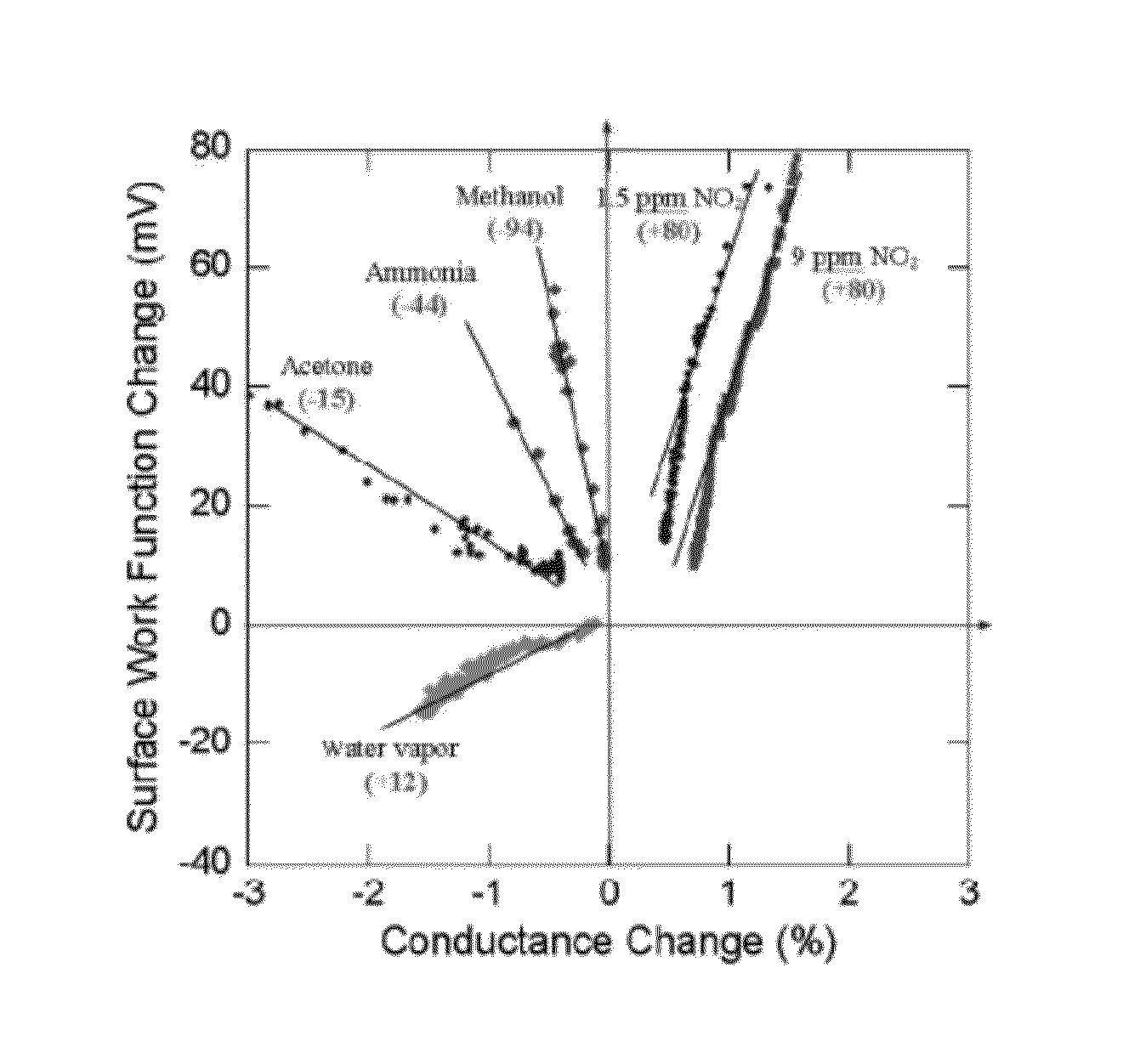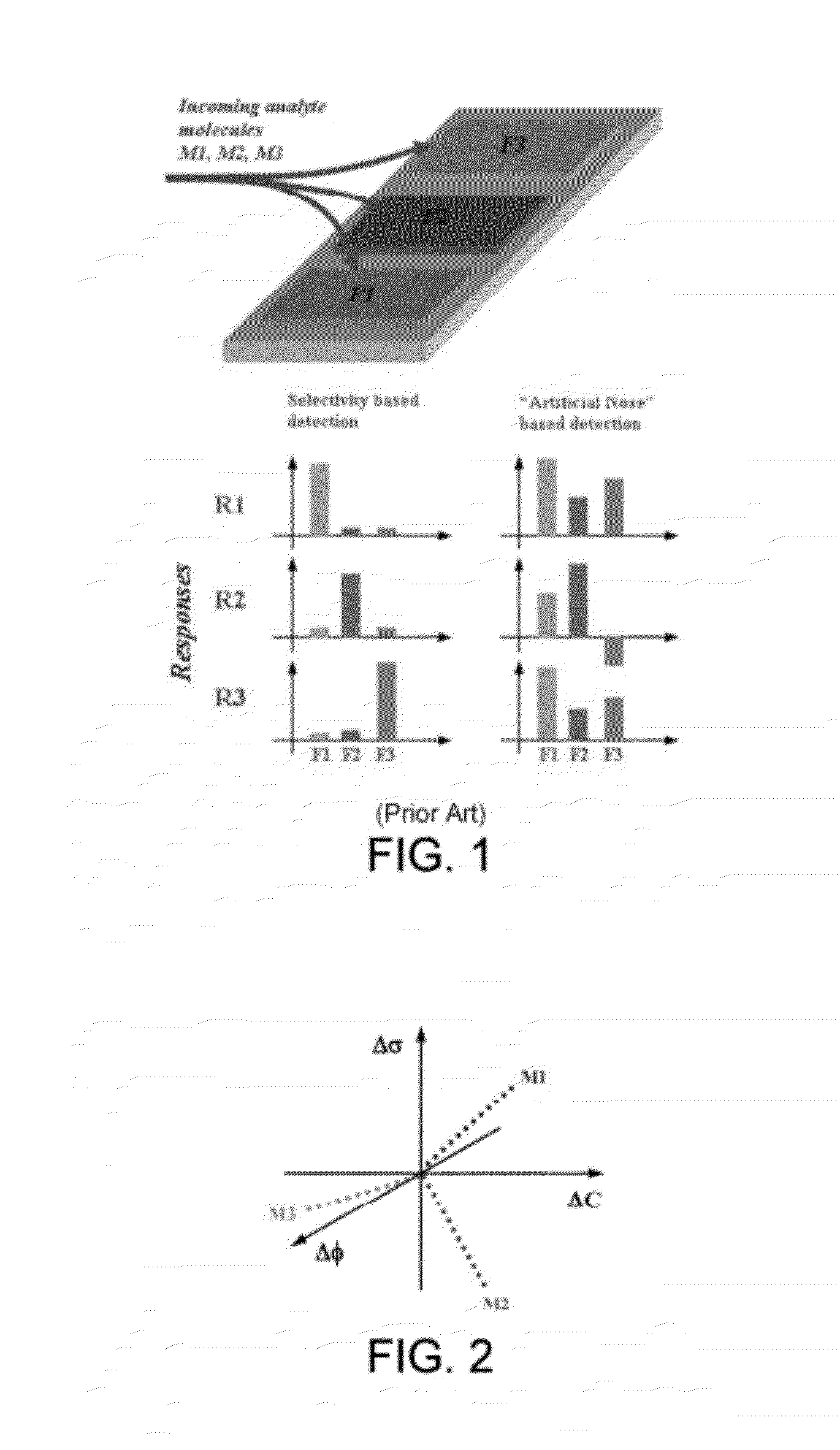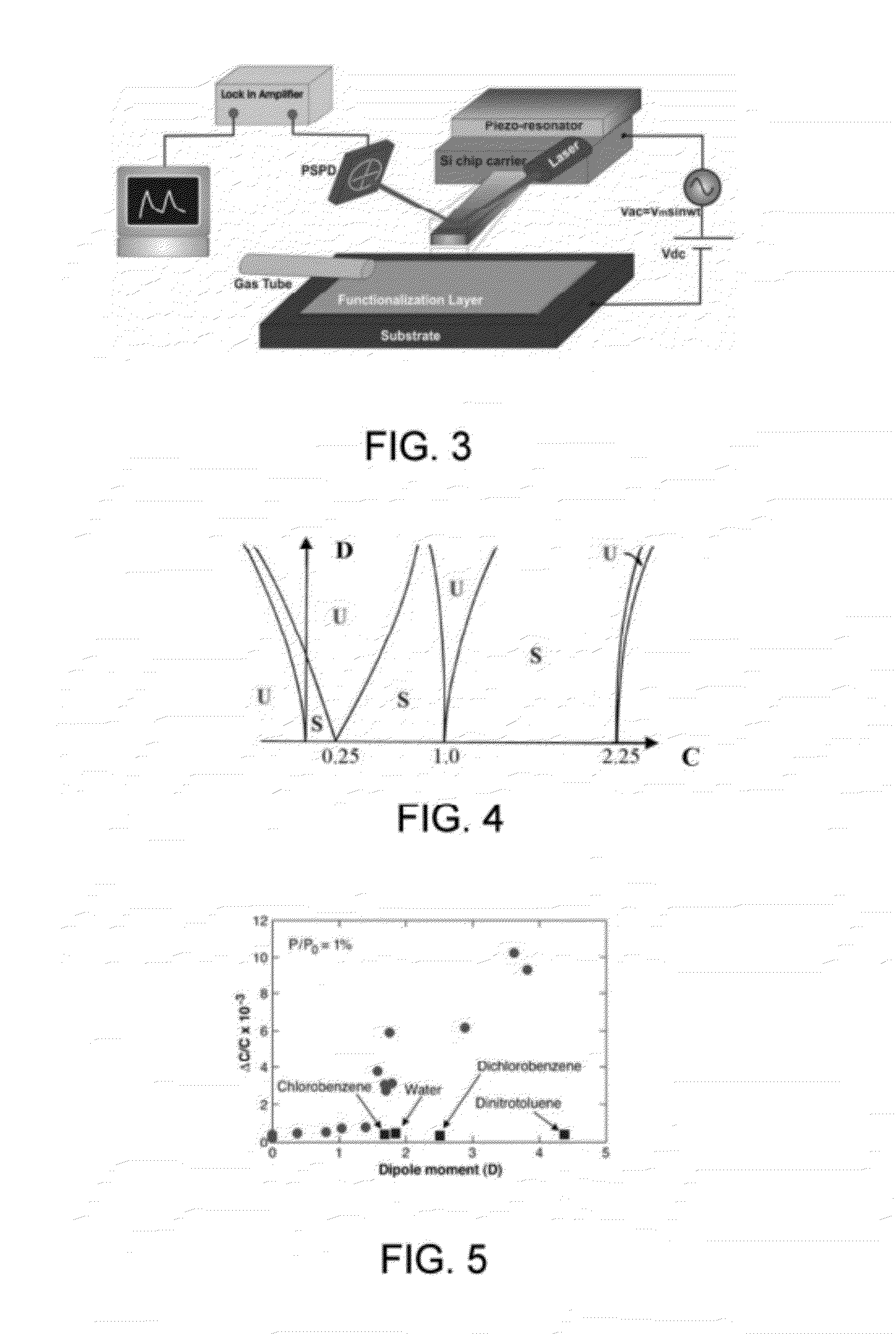Multi-dimensional integrated detection and analysis system (MIDAS) based on microcantilvers
a detection analysis and microcantilver technology, applied in the field of multi-dimensional integrated detection and analysis system based on microcantilvers, can solve the problems of not being able to integrate with modern-day microfabricated devices, still not suitable for a wide variety of applications, and being extremely difficult to uniquely identify the type of molecules as well as quantify their concentration, etc., to achieve the effect of improving the response time, sensitivity, and false identification ra
- Summary
- Abstract
- Description
- Claims
- Application Information
AI Technical Summary
Benefits of technology
Problems solved by technology
Method used
Image
Examples
examples to
Illustrate Present Invention
[0053]The present invention is a very easy and inexpensive way of depositing the NG functionalization layer by simple mechanical exfoliation (abrasion) on a ceramic substrate (metallic plates or even paper could also be used). The nanostructures were characterized by TEM to understand their structure. FIG. 6 shows the lattice resolved TEM images of a graphite nanostructure. We found that the NG consists mostly of crystalline graphene sheets, although some amorphous phases are also intermixed. Very good repeatability can be observed for surface potential over different cycles. Very high rise rates are observed (>1 mV / s for 1.5 ppm NO2) which can allow NO2 detection in tens of ms timeframe for any concentration over 1 ppm assuming a background noise of ˜50 μV. The noise limited detection limit of the current set up is estimated to be a few ppb which is comparable to the lowest detection limits of NO2 reported in the recent literature. As mentioned earlier, ...
PUM
| Property | Measurement | Unit |
|---|---|---|
| width | aaaaa | aaaaa |
| thickness | aaaaa | aaaaa |
| thickness | aaaaa | aaaaa |
Abstract
Description
Claims
Application Information
 Login to View More
Login to View More - R&D
- Intellectual Property
- Life Sciences
- Materials
- Tech Scout
- Unparalleled Data Quality
- Higher Quality Content
- 60% Fewer Hallucinations
Browse by: Latest US Patents, China's latest patents, Technical Efficacy Thesaurus, Application Domain, Technology Topic, Popular Technical Reports.
© 2025 PatSnap. All rights reserved.Legal|Privacy policy|Modern Slavery Act Transparency Statement|Sitemap|About US| Contact US: help@patsnap.com



